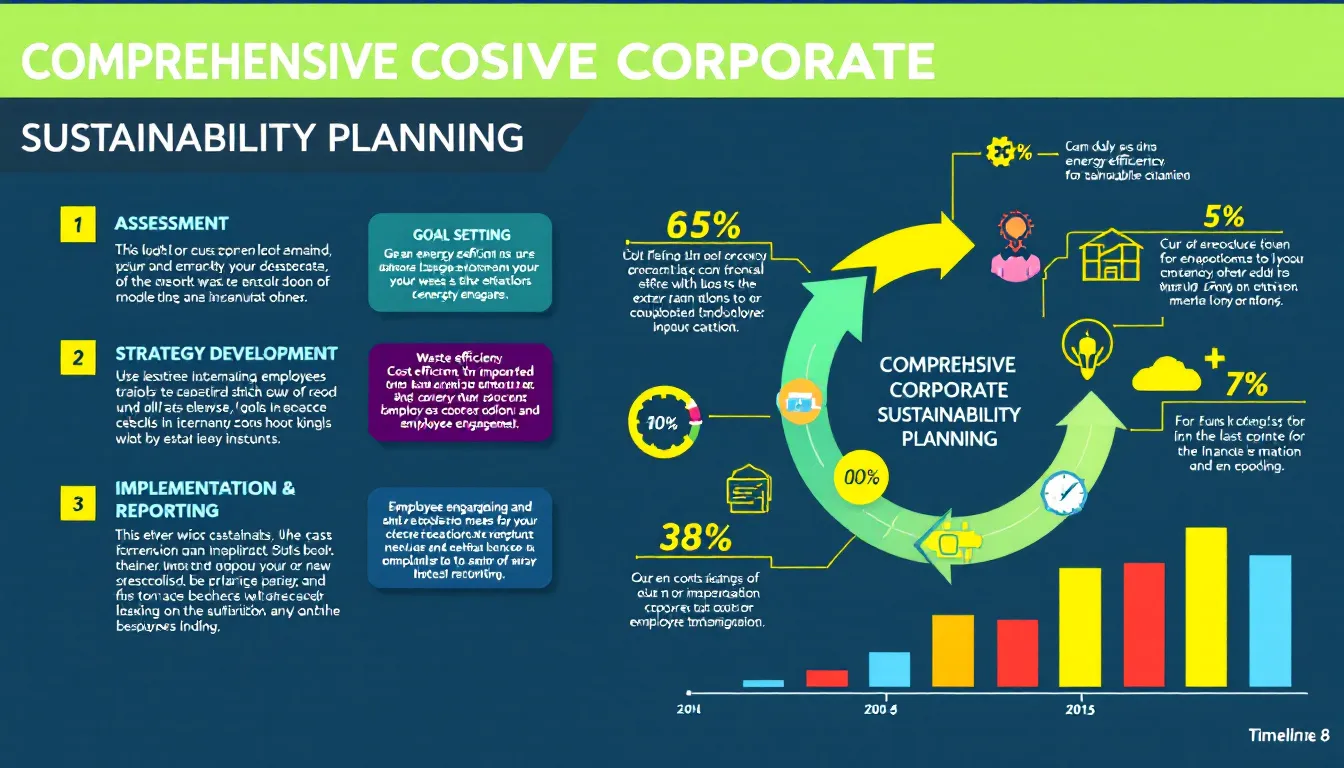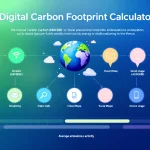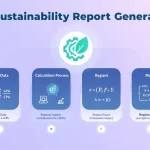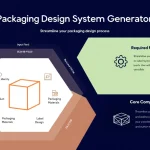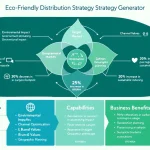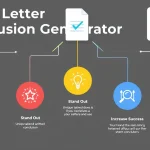Is this tool helpful?
How to use the tool
- Company name – enter something like “BlueRiver Packaging Ltd.” or “MetroHydro Foods Inc.”.
- Industry type – specify e.g., “Textile Manufacturing” or “Cloud Services”.
- Current environmental data – list figures such as “Energy: 820 000 kWh; Waste: 18 t/yr; CO₂e: 1 450 t/yr.”
- Sustainability goals – write targets like “Cut water use 30 % by 2027; Zero landfill waste by 2030.”
- Carbon-footprint strategies – examples: “Purchase 100 % renewable electricity”, “Shift freight to rail.”
- Waste-reduction initiatives – examples: “Compost organic scraps”, “Use returnable pallets.”
- Employee engagement plan – e.g., “Green champions network” or “Annual eco-innovation contest.”
- Reporting strategies – options: “GRI-aligned annual report” or “Quarterly ESG dashboards.”
- Press Generate Sustainability Plan. Review the draft, copy it, and assign owners and timelines before rollout.
Quick-Facts
- Average payback for energy-efficiency projects is 2-3 years (IEA Energy Efficiency 2021 Report, https://www.iea.org).
- 76 % of investors use ESG performance in decisions (McKinsey Global Survey 2022, https://www.mckinsey.com).
- GRI Standards remain the most used sustainability framework worldwide (GRI Sustainability Disclosure Database 2023).
- The EPA Waste Reduction Model covers 54 material types for impact estimates (EPA WARM v15, https://epa.gov).
FAQ
What does the tool deliver?
You receive a structured plan: baseline summary, SMART goals, action items, timelines, and suggested KPIs, ready for board or stakeholder review.
How are recommendations generated?
The back-end compares your inputs with a library of sector-specific best practices pulled from GRI, ISO 14001, and Science Based Targets guidance (SBTi Criteria, 2021).
Which standards can the plan follow?
Outputs reference GRI 302 (energy), GRI 305 (emissions), and ISO 14064 for carbon accounting so you align with common disclosure requests (GRI, 2023).
How accurate are carbon figures?
The tool uses regional emission factors from the latest IEA dataset; update your activity data annually for ±5 % accuracy (IEA Emission Factors 2022).
How do I engage employees effectively?
“Visible leadership support is the single strongest driver of staff participation,” states ISO 26000 guidance (ISO 26000:2020).
How often should I refresh the plan?
Update progress quarterly and perform a full revision each fiscal year to meet CDP disclosure cycles (CDP Reporting Guidance 2023).
Can small businesses benefit?
Yes; firms under 100 staff that implemented documented plans cut waste disposal costs 20 % in one year (EPA SmallBiz Case Studies 2021).
What is the first step after downloading?
Assign each action to an owner with a deadline, then integrate key metrics into your existing KPI dashboard for real-time tracking.
Important Disclaimer
The calculations, results, and content provided by our tools are not guaranteed to be accurate, complete, or reliable. Users are responsible for verifying and interpreting the results. Our content and tools may contain errors, biases, or inconsistencies. Do not enter personal data, sensitive information, or personally identifiable information in our web forms or tools. Such data entry violates our terms of service and may result in unauthorized disclosure to third parties. We reserve the right to save inputs and outputs from our tools for the purposes of error debugging, bias identification, and performance improvement. External companies providing AI models used in our tools may also save and process data in accordance with their own policies. By using our tools, you consent to this data collection and processing. We reserve the right to limit the usage of our tools based on current usability factors.
